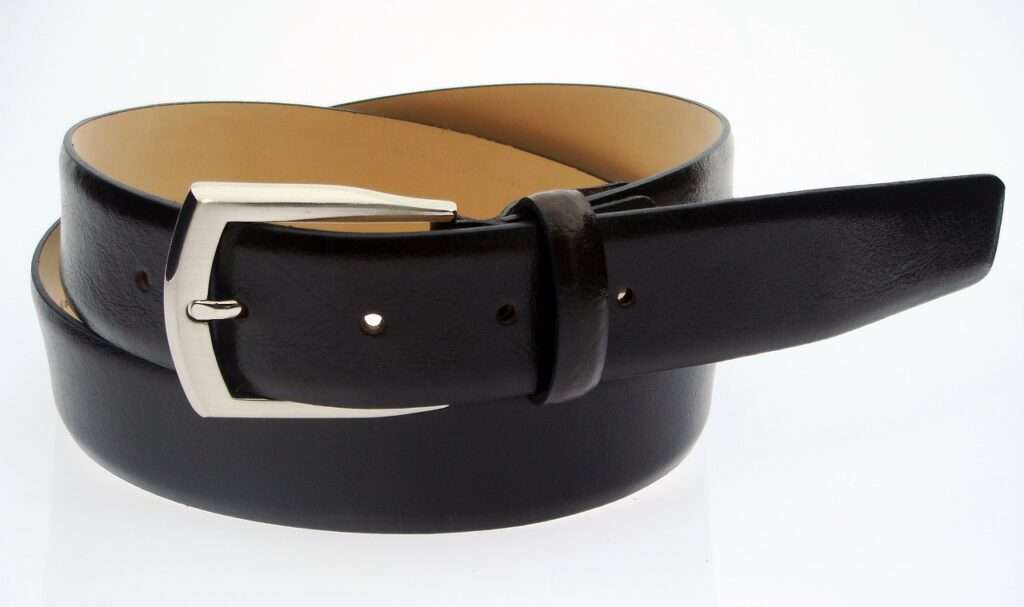The Leather Slim Belt for Men: A Timeless Accessory for Effortless Style
A leather slim belt is more than just a functional accessory. It’s a statement of elegance, refinement, and attention to […]

Leather belts have long been a staple in men’s fashion, serving both functional and aesthetic purposes. Whether you’re dressing up for a formal occasion or seeking to enhance your casual look, a quality leather belt is essential. This comprehensive guide explores the different types of leather belts available, offers tips on selecting the perfect one, and provides essential care instructions to ensure your belt lasts for years.
A leather belt is more than just a functional accessory; it is a statement piece that can elevate your entire outfit. Here’s why leather belts are significant:
Men’s leather belts come in various styles and designs. Understanding these types can help you make an informed choice based on your needs and preferences.
Casual leather belts are designed for everyday wear. They are typically wider and may feature a more relaxed design.
Formal leather belts are essential for professional settings, weddings, and other upscale events.
Dress belts are similar to formal belts but may offer slightly more decorative features.
Braided leather belts are a stylish option that adds texture and visual interest to an outfit.
Reversible belts offer two color options in one belt, providing great versatility.
Western-style leather belts often feature unique designs and embellishments, reflecting the cowboy aesthetic.
Selecting the perfect leather belt involves considering various factors, including size, color, style, and buckle type. Here’s how to choose wisely:
To find the right size, consider your waist measurement and the type of trousers you will wear the belt with. A general rule is to select a belt that is 1-2 inches larger than your waist size.
The color of your belt should complement your outfit. Here are some tips:
Consider the purpose of the belt when selecting a style:
The buckle can significantly impact the overall look of the belt:
Proper care is essential to extend the life of your leather belt. Here are some best practices:
Regular cleaning helps maintain the belt’s appearance:
Conditioning leather is crucial to prevent it from drying out and cracking:
Proper storage can prevent damage:
If your belt sustains minor damage, such as scratches or scuffs, you can often repair it:
Measure your waist where your pants sit and add 1-2 inches to determine the appropriate belt length. Standard belt sizes usually correlate to your waist size.
While traditionally discouraged, fashion has evolved, and mixing colors can be stylish if done thoughtfully. Choose complementary tones for a balanced look.
Regularly dust your belt after each use, and perform a deeper clean every few months, or as needed, depending on exposure to dirt and stains.
Store your leather belt flat or rolled in a cool, dry place away from sunlight. Avoid hanging, as it can stretch the leather.
Most leather belts are not waterproof. Apply a leather waterproofing spray for protection against moisture, but avoid soaking them.
Small scratches and scuffs can often be repaired at home using leather conditioners or creams. For larger damages, consider consulting a professional.
Blot the wet area immediately with a soft cloth and let it air dry at room temperature. Avoid direct heat sources, as they can damage the leather.
A well-chosen leather belt is an investment that can enhance your style and provide functionality for years to come. By understanding the different types of leather belts, how to select the right one, and the best care practices, you can maintain the beauty and longevity of your leather accessory. With the right approach, your leather belt will continue to make a statement every time you wear it, proving that it’s much more than just a practical piece of clothing.
A leather slim belt is more than just a functional accessory. It’s a statement of elegance, refinement, and attention to […]
Leather belts have long been a staple in men’s fashion, serving both functional and aesthetic purposes. However, among the vast
A leather dress belt for men is not just a functional accessory; it is a statement piece that adds a
Leather classic pin buckle belts have been a staple in men’s fashion for centuries. Known for their simplicity and durability,
When it comes to fashion accessories, a well-chosen belt can make all the difference. Among the variety of belt styles
Leather casual belts for men are more than just a practical accessory; they’re an essential part of a man’s wardrobe,
Leather braided belts for men are more than just a functional accessory; they represent a blend of style, craftsmanship, and
A leather biker belt isn’t just an accessory; it’s a symbol of rugged style, practicality, and durability. Designed for motorcyclists
Leather tooled belts for men have long stood as an emblem of functionality, style, and artisan craftsmanship. These belts not
A leather studded belt has made its mark as a bold accessory in men’s fashion. While belts are typically viewed
A Modern Take on Men’s Accessories Belts are more than just a practical tool to hold up your trousers—they are
Leather work belts are not just functional accessories; they are essential components of a man’s wardrobe, providing style and durability